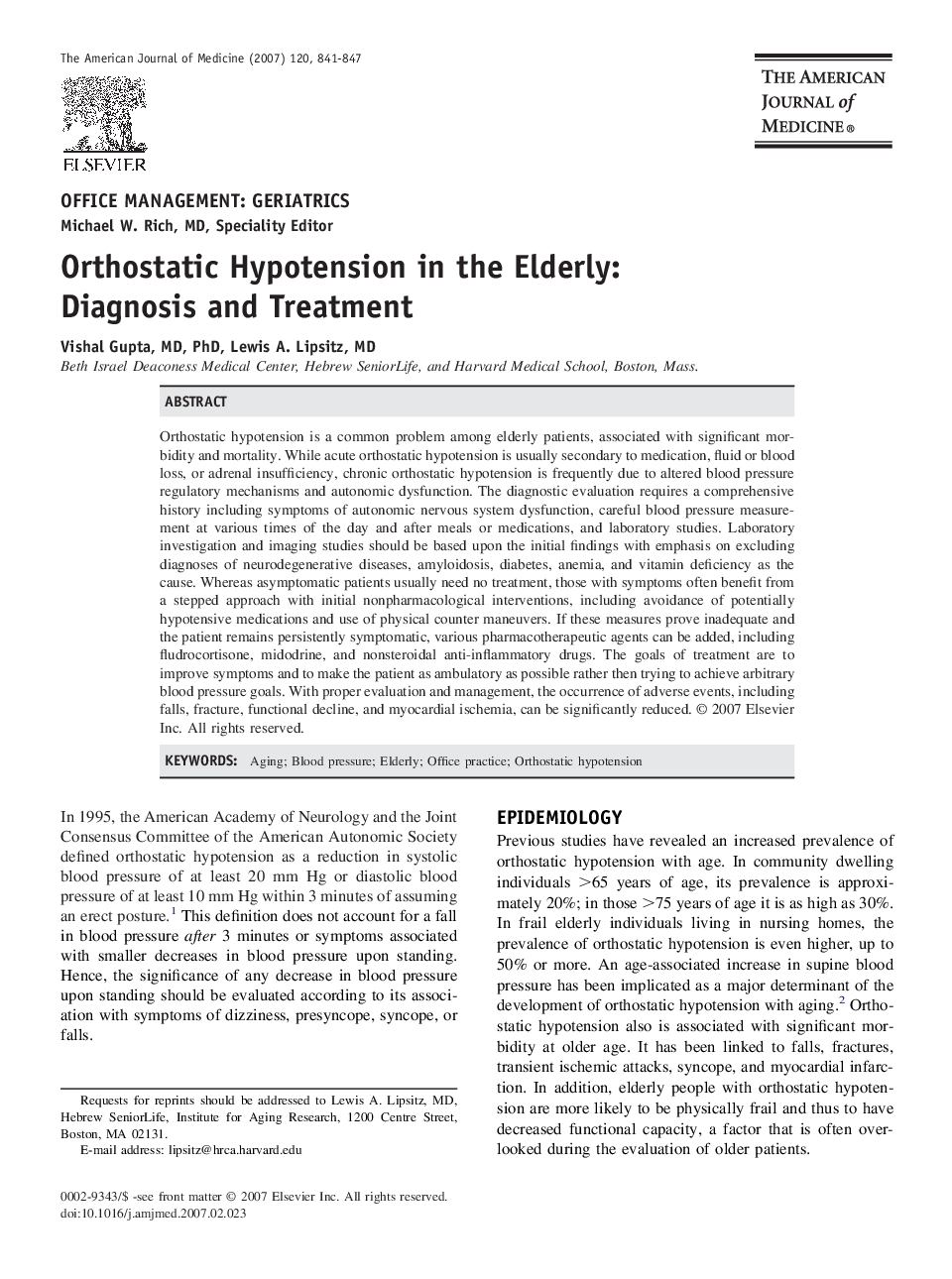| Article ID | Journal | Published Year | Pages | File Type |
|---|---|---|---|---|
| 2720354 | The American Journal of Medicine | 2007 | 7 Pages |
Orthostatic hypotension is a common problem among elderly patients, associated with significant morbidity and mortality. While acute orthostatic hypotension is usually secondary to medication, fluid or blood loss, or adrenal insufficiency, chronic orthostatic hypotension is frequently due to altered blood pressure regulatory mechanisms and autonomic dysfunction. The diagnostic evaluation requires a comprehensive history including symptoms of autonomic nervous system dysfunction, careful blood pressure measurement at various times of the day and after meals or medications, and laboratory studies. Laboratory investigation and imaging studies should be based upon the initial findings with emphasis on excluding diagnoses of neurodegenerative diseases, amyloidosis, diabetes, anemia, and vitamin deficiency as the cause. Whereas asymptomatic patients usually need no treatment, those with symptoms often benefit from a stepped approach with initial nonpharmacological interventions, including avoidance of potentially hypotensive medications and use of physical counter maneuvers. If these measures prove inadequate and the patient remains persistently symptomatic, various pharmacotherapeutic agents can be added, including fludrocortisone, midodrine, and nonsteroidal anti-inflammatory drugs. The goals of treatment are to improve symptoms and to make the patient as ambulatory as possible rather then trying to achieve arbitrary blood pressure goals. With proper evaluation and management, the occurrence of adverse events, including falls, fracture, functional decline, and myocardial ischemia, can be significantly reduced.
